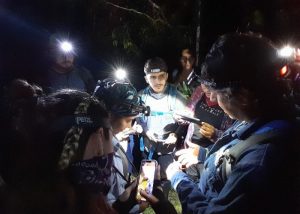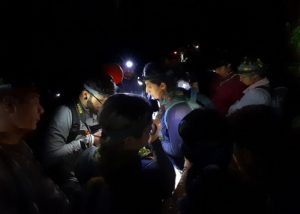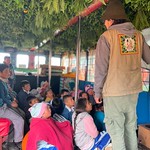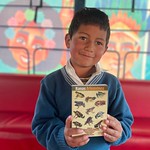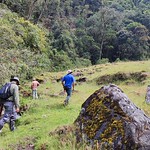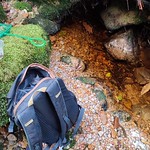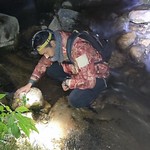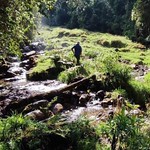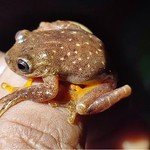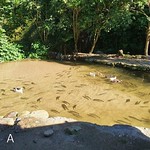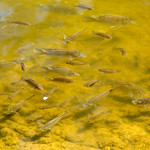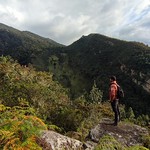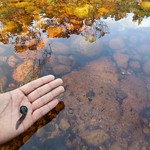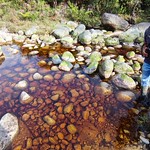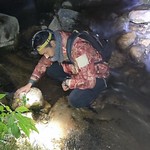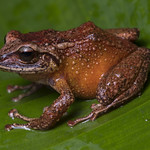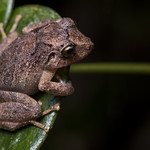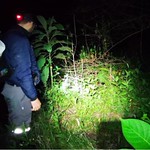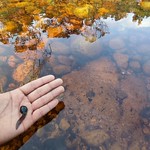Small Grant Login

0% of this project has been implemented.
September 1, 2020
September 30, 2024
Project Summary
While the species was once common, it has not been recorded since 2010; consequently, very little is known about the species. To save the treefrog from extinction, Fundación ProAves seeks to implement an innovative project that will commence with comprehensive research to gather necessary biological data about the species, including the abundance of population densities at key sites. This information will be analysed and presented to stakeholders and experts, who will collaborate to develop a conservation action plan for the species, which will be implemented by ProAves. In addition to establishing new protected areas and restoring habitat, ProAves will launch an educational campaign to raise awareness about the treefrog among the community within the species’ range. Through this multi-faceted project, we seek to expand the species’ protected habitat and reverse its population trend from decreasing to increasing, so that its Red List status ultimately can be downgraded from Critically Endangered.
Objectives
Research: Rapid survey techniques for 5 days at 40 different locations across the species range, including nocturnal searches, live pitfall traps and other standard techniques used to search for amphibians.
Practice: Research results will be shared with stakeholders and experts, who will collaborate to develop a conservation action plan for the species, which will be implemented by ProAves.
Outreach: In addition to establishing new protected areas and restoring habitat, ProAves will launch an educational campaign to raise awareness about the Colombian tree frog among the community within the species’ range.
Key Documents
- Mubadala Project Brochure (ENG)
- Mubadala Project Brochure (ARB)
- Colombia Projects Factsheet (ARB)
- Colombia Projects Factsheet (ENG)
Project location - Colombia, South America
Field Reports
First National Course on Techniques for the Study of Amphibians
October 12, 2023
To promote knowledge and research on amphibians in Colombia, ProAves, with support from The Mohamed bin Zayed Species Conservation Fund, conducted the 1st National Course on Techniques for the Study of Amphibians. This course took place from October 12 to 16 at the ProAves Cerulea Warbler Reserve, located in San Vicente de Chucurí, Santander.
The Rana Chiva, the real-life conservation “magic school bus”
February 28, 2023
The Rana Chiva Bus, a community-based mobile environmental awareness project. This real-life “Magic School Bus” brings conservation education to school children and community members throughout Colombia. The project’s objective is to bring community-based environmental awareness to schools for students to learn about endangered species.
To date, the bus visited 34 schools in seven municipalities (three departments) educating more than 12,450 kids on the importance of conservation.
The Rana Chiva also offered the platform for Women for Conservation workshops to discuss environmental sustainability and nature protection. The workshops aim to empower local women’s role in conservation. To date, 1,481 women have been trained in the Women for Conservation program.
Click on each thumbnail to enlarge and read the captions
Three expeditions over 297 hours on the look out for the Lynch tree frog
November 30, 2022
Between September and November, the ProAves team went back into the field in the search for the Lynch tree frog. Over the 3 month period, they managed:
- 3 Expeditions
- 4 sites visited
- 297 hours of active search
- 93.1km traversed
- 33 species of amphibians recorded
The project team used the Rana Chiva educational bus and visited 34 schools/colleges, in seven municipalities reaching a total of 12,498 attendees. In addition, 1,481 women were trained in the Women for Conservation programme.
Click on each thumbnail to enlarge and read the caption.
February 2022: Concepción - Guaca - Santa Bárbara Municipalities, Colombia
February 19, 2022
During a 12-day expedition our diligent herpetologists traversed three separate forest locations and covered over 26 kilometres concentrating on areas adjacent to streams, swamps, and springs. After an exhaustive search one adult female of the species Hyloscirtus Bogotensis (Near Threatened category) was discovered and nearby tadpoles were found, which may indicate a reproductive population in this locality. For more photographs visit this flickr photo album and for full details of the expedition read the field report here.
Field Trip Photos. Click the thumbnail to enlarge it and read the captions.
Could the Rainbow Trout be responsible for the elusiveness of the Lynch’s Tree Frog?
February 1, 2022
Originally introduced into Colombia for recreational fishing, very little is known about the Rainbow Trout’s impact on fauna in the country. However, elsewhere its predation and competition has proven to be responsible for the decline and disappearance of native amphibians, as well as fish and invertebrates, through the disruption of food webs. Some good news though may be that the high cost of trout feed will be an obstacle for the further development of trout farming in the region!
Click the thumbnail to enlarge it and read the caption.
January 2022: Charalá, Northeastern Colombia
January 24, 2022
Travelling through dense forests along the Guillermo River our intrepid frog experts carried out three-night and six-day tours in search of the elusive Lynch’s Tree Frog. During the survey they identified 10 species, two of which were Threatened status and three Vulnerable. Enjoy the photographs located in this flickr photo album and for full details of the expedition read the field report here.
Field Trip Photos. Click the thumbnail to enlarge it and read the captions.
December 2021: Bucaramanga, Colombia
December 15, 2021
ProAves, our conservation partner in Colombia, embarked on an 9-day field survey in December 2021 at elevations of up to 4,000 meters in search of Lynch’s tree frog. Along the way they identified six species of frog, as seen in the photo album below. Read the field report here. For full photographic documentation of the amphibian species encountered, see this flickr photo album. The photographs will amaze you.





















































